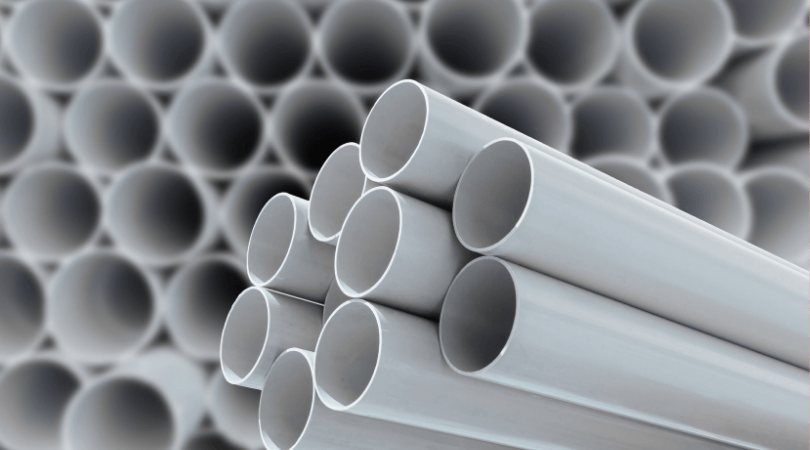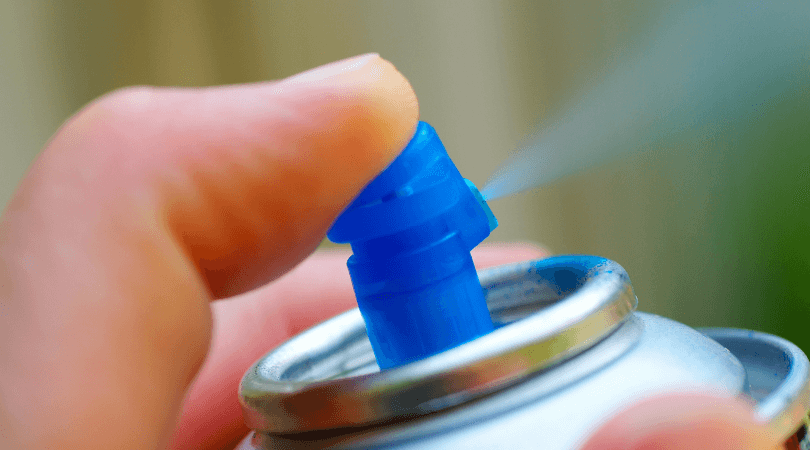Hello people; I hope you’re all doing fine. Today I will share a fantastic guide on how to paint PVC pipe. Hang on to know more.
Painting PVC Pipe: What it is All About?
The following guide on painting PVC is designed and illustrated so that everyone can understand, regardless of their settings, backgrounds, and amount of working experience with PVC.
PVC, although easy with activities like cutting and gluing, the painting comes with different levels of difficulties and challenges. While PVC piping comes with all types of brights, you’ll still need to learn how to paint PVC if you have a more subtle palette in mind.
Painting PVC is not as easy as it seems. It comes with a particular type of molecular makeup that prevents most liquids from bonding to their surface. Paint on PVC tends to bubble, flake, or rub right off.
However, there’s one piece of good news for all the persistent DIYers. Fortunately, there have been groundbreaking developments in spray paints that allow bonding with all kinds of plastics, let alone PVC.
Although some plastic-rated paints do not require any special preparation, follow the procedure below to make minimal mistakes and get the best results.
Tools and Materials
- Plastic-rated spray paint
- Rubber gloves
- Acetone
- Drop cloths
- 220-grit sandpaper
Safety First
When painting PVC pipe, you will primarily be working with epoxy-based paints. These paints are harmful to an individual if not used properly. Remember that reading the product manual and instructions shouldn’t be ignored. Read, understand, and follow the safety rules without fail to avoid any bodily harm.
Hands
Always make sure you’re using some hand protection when working with chemicals. Rubber gloves, as mentioned, will do the job quite well. The gloves are readily available in most grocery and departmental stores.
Mouth & Lungs
Wearing a mask or respirator is a must. Some spray paints may cause allergic reactions and respiration problems. Work in a well-ventilated area with a lot of open windows. Vapors from spray paints can make you dizzy. If something like that happens, leave the site immediately and seek fresh air.
Eyes
Wear goggles, safety glasses, and other eye protection when working with paints. Overspraying reaching the eyes is a common phenomenon when dealing with paints.
Procedure to Follow to Paint PVC Pipe
- Step 1: Prepare Your Work Area
- Step 2: Sanding the Pipe
- Step 3: Cleaning the Pipe
- Step 4: Protection Against Splatter
- Step 5: Applying Spray Paint
- Step 6: Applying the Second Coat
- Step 7: Let it Dry for 24 Hours
Step 1: Prepare Your Work Area
Painting PVC on a low-humidity day will be a great choice, ideally between 50 and 85 degrees Fahrenheit. An ideal location would be a well-ventilated yet wind-free area; a good example is a garage with doors and windows open with airflow. Acetone is a highly flammable chemical, so it should be used and stored away from heat sources. Note that you should not wash up well while working with acetone once the work is done.
Step 2: Sanding the Pipe
Rub the exterior of the pipe by hand with 220-grit sandpaper. You might think about using an electric sander, but rubbing sandpaper manually works best as an electric sander can wear the pipe too much and too fast. Sand in all directions properly to avoid any undesirable grooved surface. Be gentle; it is also important not to be hard on the pipe.
Have a lot of sandpaper on hand because the waxes of PVC pipe will come off on the paper, making it lose its roughness.
Step 3: Cleaning the Pipe
Wear rubber gloves, damper a clean rag with acetone, and then wipe the surface of the pipe. Let it be the way it is for 20 -30 minutes to dry. The acetone works as a removal agent, removing all the access sand and swelling the surface of the PVC pipe to make it more porous for painting.
Step 4: Protection Against Splatter
Lay old newspaper, plastic sheeting, or clothes on the area suspectable to splatter or overspray, then ready the pipe for spraying. When painting longer pieces, use a wall, ladder, and chair to prop the pipe (after protecting them with newspaper or plastic sheeting). On the other hand, short pieces may easily stand on their own, making it quicker to get an all-over of paint.
Step 5: Applying Spray Paint
It’s time for the fun stuff; grab your spray paint and shake it meticulously for 15-20 minutes. Side-by-side by a sweeping motion, spray paint the pipe, starting from the top and working your way down to the bottom. Paint PVC pipe with thin, continuous layers overlapping the paint as you move down the pipe. Doing that correctly will make a good coat and avoid unnecessary drips.
Step 6: Applying the Second Coat
This is an exciting part of the process as people tend to make more mistakes here, assuming that painting the second time requires less cautiousness.
Before going for the second, allow the paint to dry for at least 20-30 minutes. If you must keep the piping on the ground to paint, wait until the first side is dry and then turn it over to start on the other side.
Don’t overlap paint on the side you’re already painted to achieve an even, good-looking layer.
Like all the spray painting generally done, you have to apply multiple thin layers on PVC pipe until the “true color” is reached.
Step 7: Let it Dry for 24 Hours
Allow the paint to air-dry for at least 24 hours before using it for any project. Ensuring a reasonable drying period is essential for getting the best results or a project that could escape the pipe’s new paint.
Check the manufacturer’s instructions if you’re unsure about the best drying time. After completing your project, use a water-dampened cotton cloth to wipe and clean the pipe.
Fascinating Read – What is PVC Fittings? | What is PVC Connection? | The Definitive Guide
Best Paint For PVC Pipe
There are multiple brands in the market manufacturing PVC-adhering paints, but as far as my knowledge and experience, two brands stand out:
- Krylon Fusion All-In-One™
- Rust-O-Leum Paint for Plastic®
Both these spray-paint brands are available in your nearby home centers or hardware stores. The names listed above – KrylonFusion, and Rust O-Leum are all available in a spray can format.
Can You Paint PVC Pipe: Avoidances
Below is the list of paints that must not be used on PVC or any other plastic material, as they will not adhere to the surface.
- Acrylic-based paints
- Water-based paints
- Latex-based paints
FAQs
Below are the frequently asked questions on painting PVC pipes. Let’s understand the topic a bit better.
Which is the better way to paint PVC pipe? Spray painting or brush painting?
Comparing both paints in terms of finishing, spray painting steals the show. It provides the best coverage and smoother finish. Brushing is not a bad option but tends to pool, smear, and leave noticeable brush strokes. Priming the PVC surface before brush painting will improve your results.
Do I need to prime the plastic before painting?
Priming before painting is a must if you paint the pipe with a brush. The specialty primer can create a foundation that helps the paint stick. However, spray paint doesn’t need priming, but as established in the piece above, scouring the pipe with sandpaper is a must before spray painting.
Can you paint PVC with latex?
Raw PVC or new PVC is generally painted with good exterior latex paint. As a routine practice, always ensure the surface is clean and clear. Acetone and denatured alcohol work well for cleaning PVC.
Is it compulsory to paint PVC?
Nope. It is not essential to paint PVC. It entirely depends on your personal choice. Some people want their pipes to look in a specific way. Thus, they refer to doing the painting.
Suggested Read
- PEX Vs PVC | The Definitive Guide
- Top 10 PVC Manufacturers and Suppliers in the World
- Top 10 PVC Manufacturers and Suppliers in USA
- What is PVC Fittings? | What is PVC Connection? | The Definitive Guide
- PVC Pipes: Sch 40 Pipe Dimensions
The Conclusion
That was all I had to know about the tips on how to paint PVC pipe perfectly. Painting, and that too painting PVC, is always a confusing topic. However, if the steps mentioned above are followed perfectly, you don’t need to worry; you will get great results. You might also have questions about brushing painting, but I believe spray painting is a much easier option.
Thanks for reading. Kindly share your thoughts and questions in the comment section.
Have a fantastic day.
Quick Navigation





Yes, I would like to know about brush painting PVC pipes, because though spray painting maybe easier it is SOOO wasteful and harmful to our health and the environment in SOOO MANY WAYS!!!